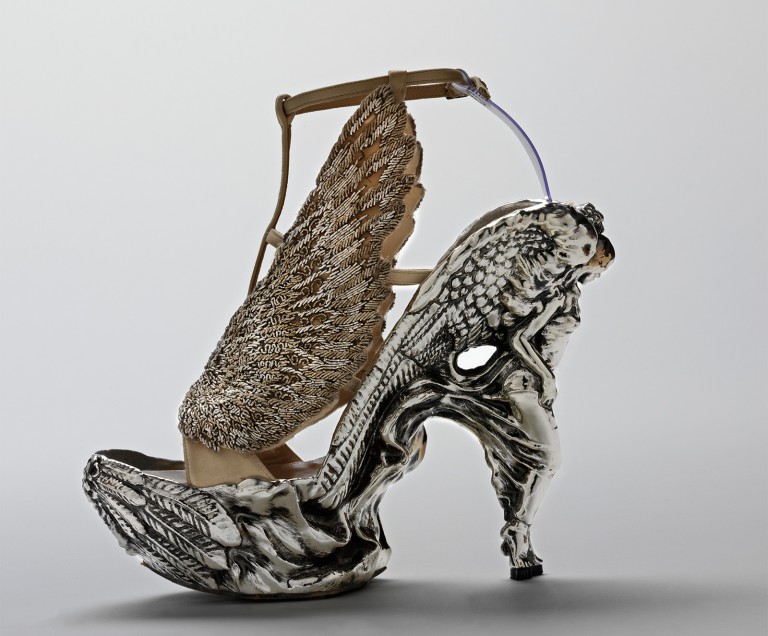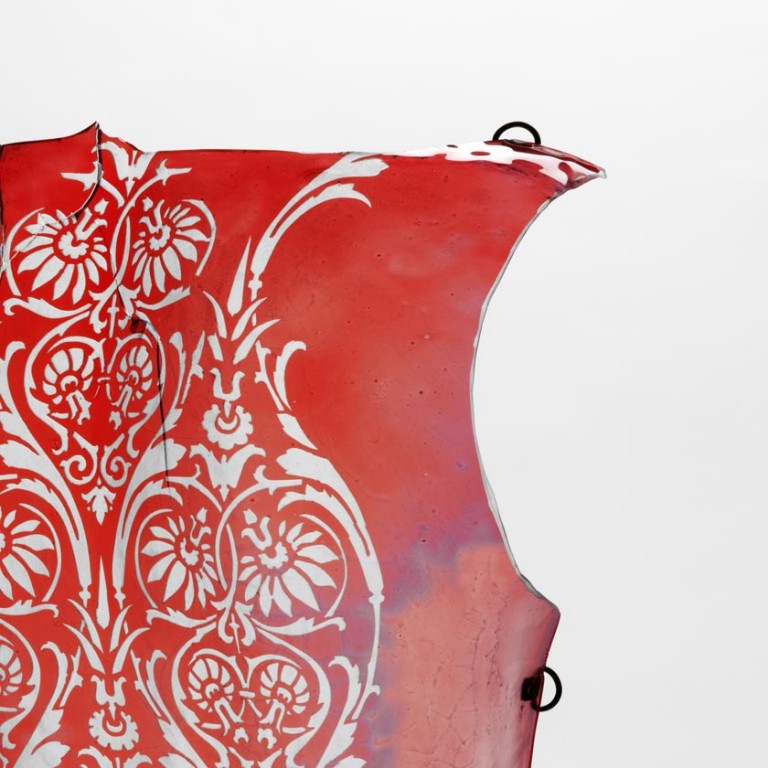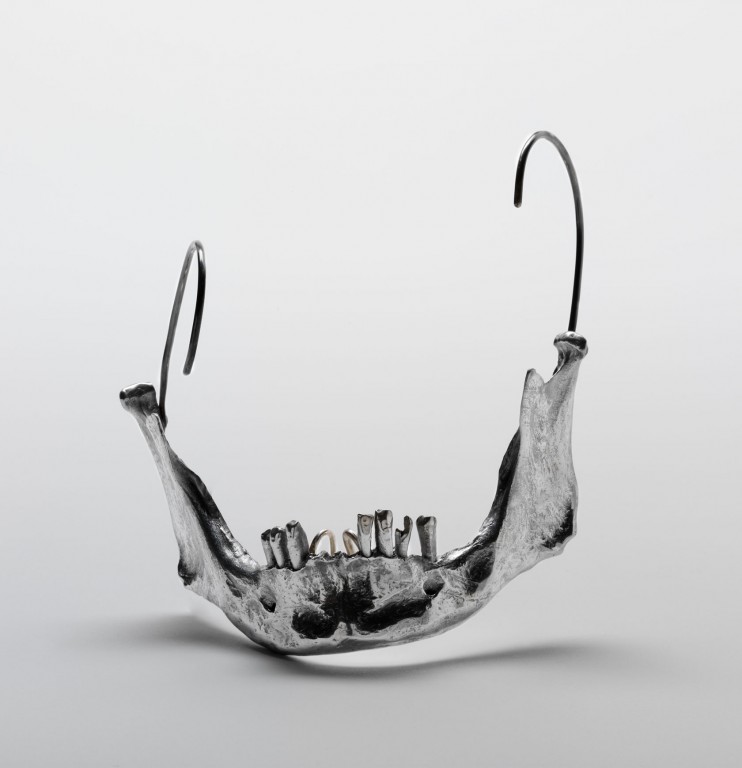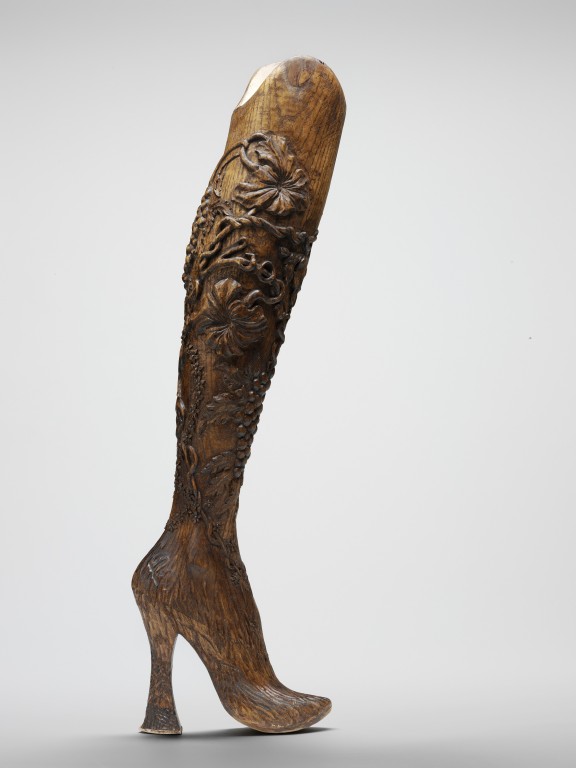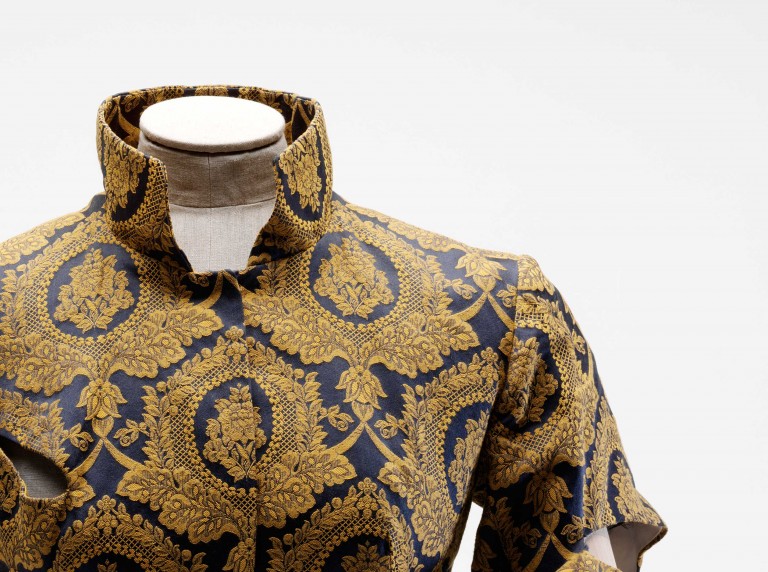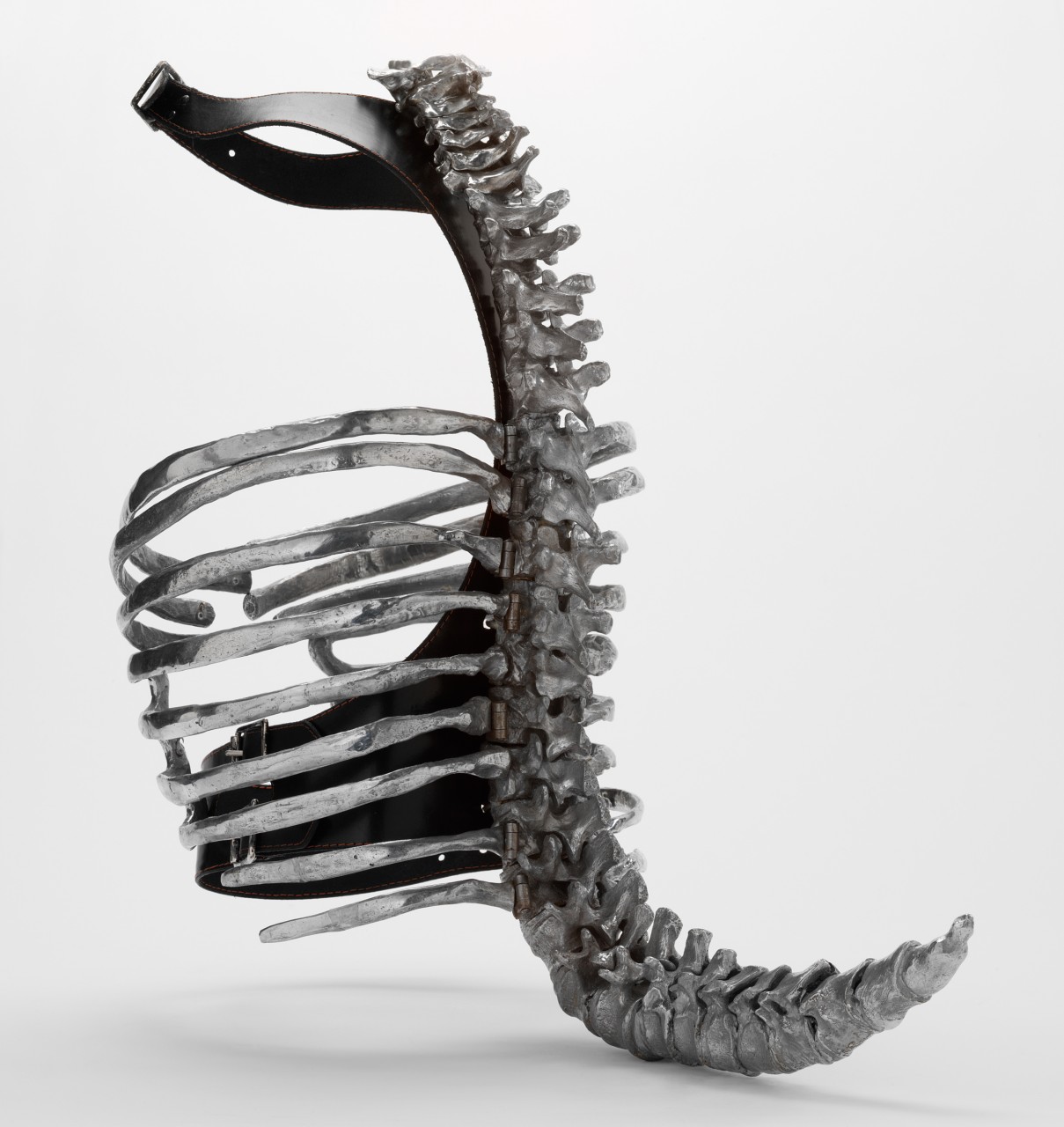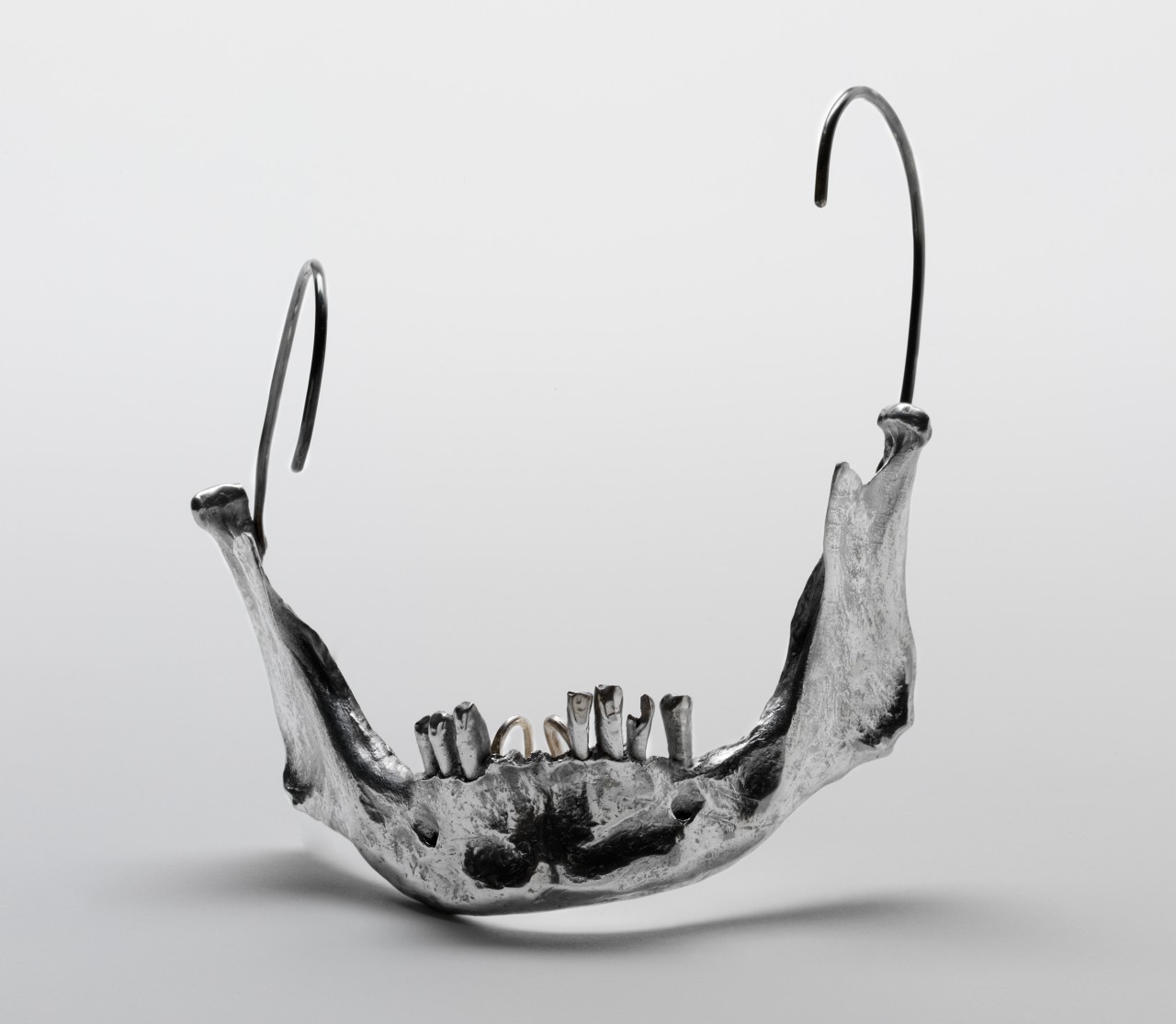ENCYCLOPEDIA OF
COLLECTIONS:
UNTITLED
McQueen’s Spring/Summer 1998 collection was the first to be presented at the Gatliff Road warehouse, a rundown former bus depot in London’s Victoria neighbourhood. A Central Saint Martins’ fashion graduate, Sebastian Pons, had joined the design team as McQueen’s assistant. Sponsored by Swarovski, it was also the first show for which McQueen received financial support from American Express, which was about to launch a new gold credit card. The collection was presented as Untitled because the sponsors were uncomfortable with the implicit sexual connotations of the original title, ‘The Golden Shower’.
The set, in which a runway had been positioned above clear Perspex tanks lit from below, engaged with McQueen’s interest in the transformative qualities of water. Thunder and lightning flashes created drama and anxiety, indicating that change was imminent. Halfway through the show the tanks beneath the catwalk filled with pools of black ink as Ann Peebles’ ‘I Can’t Stand the Rain’, overlaid with the John Williams’ soundtrack to Jaws (1975), filled the air. Sinister undertones, however, gave way to lightness for a finale of designs in white. As rain poured from the ceiling, drenching the models and causing black mascara tears to run down their faces, gauzy cottons became transparent.
Tailoring was simple, precisely cut and featured diagonal and flag panelling. While pinstripes and Prince of Wales checks were shot through with accents of gold and yellow, gold and silver glitter shone through latticed leathers.
Also evident was McQueen’s love of nature and metamorphosis, identifiable in amphibious designs such as a tight python-skin dress, which formed a second skin over the model to merge human with animal. Hybridization was further reflected in Shaun Leane’s ‘Spine’ corset, which was cast from a human skeleton and extended into a tail-like structure, worn over a sparkling black dress. The uncomfortable fusion of human and animal was inspired by Richard Donner’s horror film The Omen (1976), in which a jackal gives birth to a child. A sense of brutality was also carried through in Leane’s ‘Jaw Bone’ mouthpieces, which were worn by male models and were suggestive of the reconstructive surgery that was pioneered on Second World War soldiers. A silver headpiece by Sarah Harmanee offered commentary on the impact of weapons on the body; the metal blade that ran down the nose sitting threateningly close to the delicate skin of the face.

